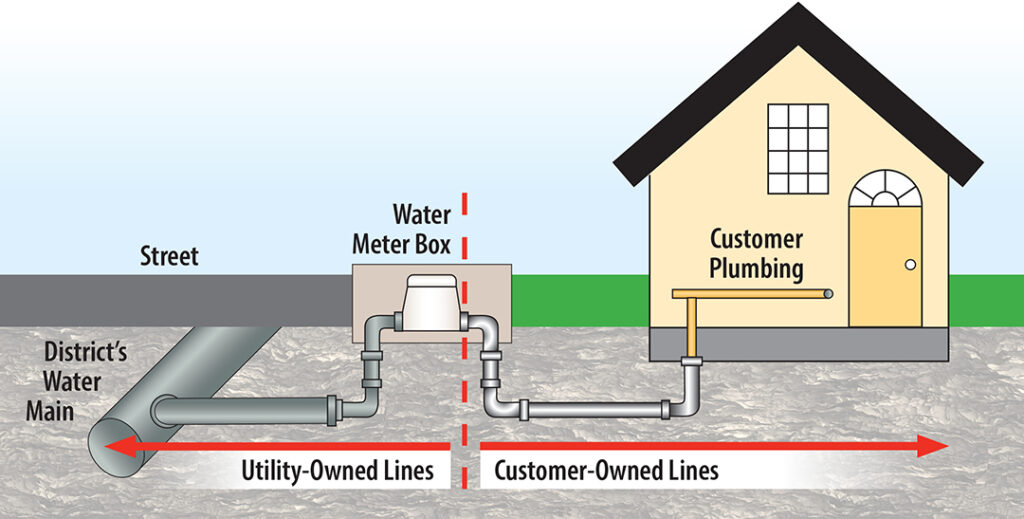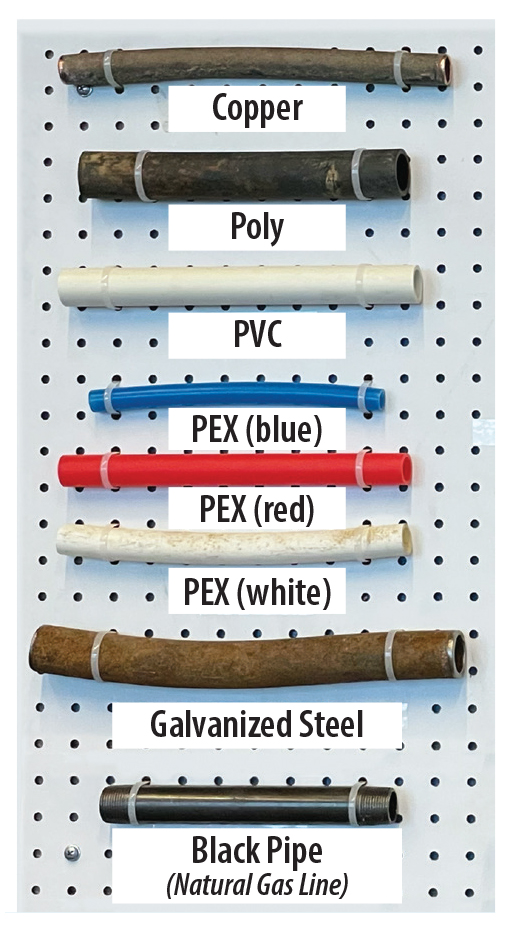
SERVICE LINE INVENTORY SURVEY
New regulations have tasked us with building an inventory of every water service line within our District, including both the Utility and Customer-owned sides of the meter. The purpose of the inventory is to identify and report any risks in the water system that would adversely affect the health of our customers due to lead contamination, with the goal of prioritizing and removing these risks. In order to begin the information gathering process, we are asking all of our customers to please complete our online survey. Your assistance will greatly help us in this task.
Several options for completing this survey:
- Complete our ONLINE SURVEY or
- Download and print our Survey Form or
- Stop by or call our office for a Printed Survey
TIPS
If you don't know your pipe type already, the easiest locations to access your service line are beyond the brass setter on your side of the water meter (this will require some digging), or where the line enters your house (generally in your crawlspace or basement).
BACKGROUND
There are a number of potential contaminants that are toxic or harmful and are regulated by the Environmental Protection Agency (EPA) in drinking water. You can see the full list HERE. Toxic elements such as Mercury, Lead, and Cadmium have historically been widely used, but various regulations by the SAFE DRINKING WATER ACT have limited their use over the years beginning in 1974. The latest regulation deals with Lead, and requires all water utilites to assess their systems by October 2024 to ensure that there are no sources of lead in the service line on both the utility side of the meter AND the customer side of the meter.
Lead contamination in water systems come primarily from its use in lead service lines and solder for copper pipes. In 1986 Congress amended the Safe Drinking Water Act to ban these uses in public water systems by June 1988. Please note that the District has no records of, and has not found that either lead lines or soldered copper pipes were ever used on the utility side of the meter, but we are now also responsible for collecting information about the customers service line.
The service line on the customer side of the meter was installed by the contractor that built the house and the District does not maintain any records on this since it is the customer's responsibility. Use the photo to help identify your service line material. Generally, many older homes used black or galvanized pipe while the newer homes used copper or HDPE.
References


